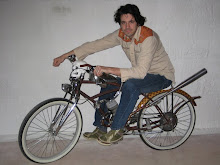

I get stressed out when I prepare the glue edges of a book matched set of expensive wood. The jointing has to be perfect - dead nuts on - either it's right without compromise or it's wrong. I run the edge through my electric jointer and then put a straight edge to it to see what I have to do to achieve absolute trueness. Also, the electric jointer leaves behind micro scallops which need to be shaved off for acceptability.
I invested in a very expensive jointer planer. She's a real beaut I got from Lee Valley. It has the ability to shave micro thin ribbons off and with a steep blade I can cut through highly figured wood with ease. Operating hand tools is an art form that I am determined to master with efficiency. One thing I've learned is to never get lazy with sharpness. Hone up your blades!
I get into a Samurai state of mind then I get my water stones out. First I clean my shop from top to bottom. I vacuum up every bit of dust and put away every tool into it's proper place. I put only what I need on the bench and I clear my mind and focus on the job at hand. Jointing is a zen thing and when you achieve perfection there is nothing left to say or think about - peace of mind is the result.
If the two halves of the book matched set are forced together with excessive clamp pressure because they are not 100% true then there is a pretty good chance that as the guitar ages and endures various changes in humidity (especially low humidity in the winter) that the wood will split just beyond the glue line.
Carving the curve of the plate is relaxing and enjoyable. This is the one part of the build where I feel myself becoming intimate with the project. This is where I become attached to the guitar - where we start to talk to each other. I carve by eye and never with a pattern because I don't want to become complacent for a second. It may sound like romantic nonsense to some but I let the wood guide me just as much as I work it under my control. The curve should be continuous. I always make sure that there are no lazy runs in the line. What I mean by that is there should never be a single area of flatness. Flat areas are easy to check by laying a straight edge onto the curve. The straight edge should only rest on a pin head sized spot of the curve.
I have also started making my patterns for the sound plate openings in the rim along with the plate's final dimensions. Once everything is cut the sound plates will fit perfectly within the rim's openings.






No comments:
Post a Comment